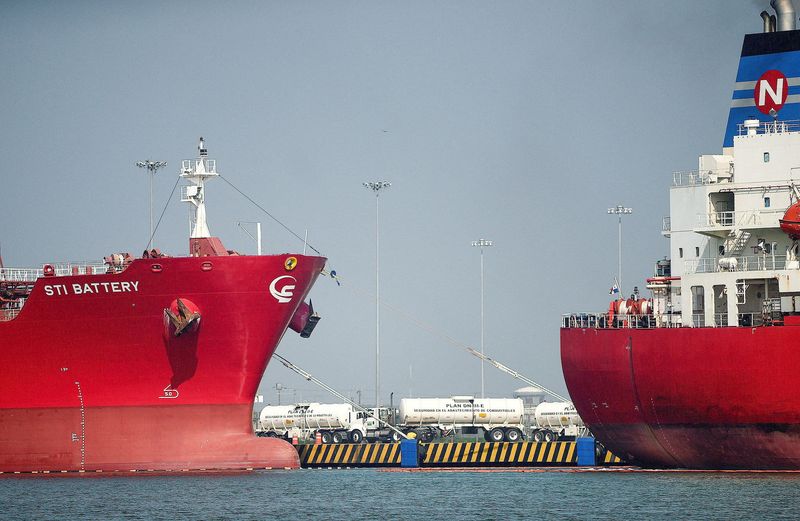Oil prices edge up with spotlight on US Fed rate verdict
By Arunima Kumar
(Reuters) - Oil prices edged up in choppy trade on Tuesday as focus turned to the U.S. Federal Reserve's policy meeting that concludes on Wednesday, while fears of weaker demand in China curbed gains.
Prices saw some support from prospects of lower U.S. crude stockpiles and concerns over U.S. production in the aftermath of Hurricane Francine.
Brent crude futures for November were up 12 cents, or 0.16% to $72.87 a barrel, as of 1153 GMT. U.S. crude futures for October gained 27 cents, or 0.39%, to $70.36 a barrel.
Prices earlier in the session fell as much as 0.79% and 0.68%, respectively.
Oil prices continue to fluctuate as traders assess supply and demand dynamics, according to Li Xing Gan, financial markets strategist at Exness.
"Furthermore, with markets uncertain about the extent of the Fed's rate cut decision on Wednesday, oil prices could see further fluctuations," Gan said.
In China, oil refinery output fell for a fifth month in August amid declining fuel demand and weak export margins, government data showed on Saturday.
Both contracts settled higher in the previous session as output remained constrained. More than 12% of crude production and 16% of natural gas output in the U.S. Gulf of Mexico remained offline due to Hurricane Francine, according to the U.S. Bureau of Safety and Environmental Enforcement (BSEE) on Monday.
"Oil prices have been in recovery mode since Wednesday, perhaps on supply concerns after Hurricane Francine in the U.S. Gulf of Mexico, as well as expectations of lower U.S. crude stockpiles," said Charalampos Pissouros, senior investment analyst at brokerage XM.
"That said, prices are pulling back today, perhaps as participants considered the aforementioned developments as temporary variables in the oil equation, remaining worried about weakening global demand, especially in China."
In U.S. the Fed is expected to start its easing cycle on Wednesday, with Fed funds futures showing markets are now pricing in a 69% chance that the central bank will cut rates by 50 basis points.
A lower interest rate will reduce the cost of borrowing and can potentially lift oil demand by supporting economic growth.
Investors were also watching out for an expected drop in U.S. crude inventories, which likely fell by about 200,000 barrels in the week ended Sept. 13, based on a Reuters poll. [EIA/S]
Source: Investing.com
